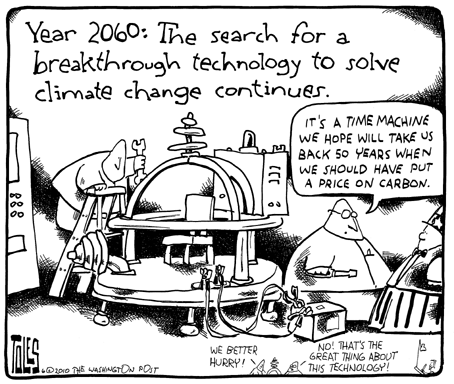Can we fix it?
 |
| Source: Ebay |
Maybe it's a job for Super Engineer!
 |
| Source: Engineering Institute of Thailand |
We cannot deny that there is massive potential in geoengineering - the past 16 blogs are evidence of the scope and wide variability of creative thinking to re-stabilise our climate before everything tips over and the situation changes irrevocably! These weeks of researching and sifting through the ideas for the major geoengineering processes has enabled me to personally and critically assess which proposals have in my view, the greatest potential for deployment and success.
My ranking is as follows (from deployable to avoidable):
1. Artificial Trees
2. Afforestation
3. Biochar
4. Enhanced Weathering
5. Marine Cloud Brightening
6. Ocean Liming
7. Iron Fertilisation
8. Land Albedo Enhancement
9. Sulfur Aerosol Injection
10. Sun Shades
As you can see from my rankings above, artificial trees have been regarded with the greatest potential as they are able to imitate natural processes within trees and plants but optimise photosynthesis rates, mitigating greater volumes of atmospheric carbon emissions. I believe that there is longevity and potential in carbon reduction methods. The problems I foresee with solar radiation management is they neglect to mitigate carbon dioxide emissions as although installations within space reduce incoming solar radiation and global temperatures, they can lull us into a false sense of security that current anthropogenic activity is okay, allowing the continuation of an accelerating rate of atmospheric carbon dioxide emissions. This situation provokes great concern: what if the 'fix' goes wrong?
The downside of a technological fix is that despite how sophisticated it is, you cannot guarantee that it will work, continue to work, and not have unforeseen and undesirable, unintended consequences - to quote Donald Rumsfield (2002):
So should we fix the climate?
Currently, there is adverse criticism to geoengineering due to the great uncertainty and implications it entails. As of yet, no proposal has made it past laboratory stages (Bellamy, 2014) (bar SPICE) so further development is needed before there is any attempt at deployment. However great progress and potential has been noticed in recent years towards geoengineering. The IPCC included it for the first time in their fifth assessment report in 2013, and according to Ken Caldeira :
My ranking is as follows (from deployable to avoidable):
1. Artificial Trees
2. Afforestation
3. Biochar
4. Enhanced Weathering
5. Marine Cloud Brightening
6. Ocean Liming
7. Iron Fertilisation
8. Land Albedo Enhancement
9. Sulfur Aerosol Injection
10. Sun Shades
As you can see from my rankings above, artificial trees have been regarded with the greatest potential as they are able to imitate natural processes within trees and plants but optimise photosynthesis rates, mitigating greater volumes of atmospheric carbon emissions. I believe that there is longevity and potential in carbon reduction methods. The problems I foresee with solar radiation management is they neglect to mitigate carbon dioxide emissions as although installations within space reduce incoming solar radiation and global temperatures, they can lull us into a false sense of security that current anthropogenic activity is okay, allowing the continuation of an accelerating rate of atmospheric carbon dioxide emissions. This situation provokes great concern: what if the 'fix' goes wrong?
The downside of a technological fix is that despite how sophisticated it is, you cannot guarantee that it will work, continue to work, and not have unforeseen and undesirable, unintended consequences - to quote Donald Rumsfield (2002):
"There are known knowns. These are things that we know that we know. There are known unknowns. That is to say, there are things that we know we don't know. But there are also unknown unknowns. There are things we know we don't know."The solar radiation schemes would remove all impacts of climate change suddenly, and require constant maintenance to prevent any glitch in the system, which is enough to bring the entire project to a halt with catastrophic effects. It is the rapidity of the return of intensified climatic effects that people are concerned about and Schneider (1996) uses the following metaphor:
"It is better to cure heroin addiction by paced medical care that weans the victim slowly and surely from drug addiction than by massive substitution of methadone or some other 'more benign' or lower cost narcotic." (Page 299).
Geoengineering failure would result in rapid climate change effects at such speed that the Earth and its eco-systems would not be able to adapt. This is because geoengineering is a technological fix - but that's all it is isn't it? The size and global impact of climate change needs more than that. A combination of measures that will mitigate carbon dioxide emission growth need to be researched and developed further before we resort to technology to delay the impending impacts of climate change at such high risk of global devastation.
So should we fix the climate?
 |
| Source: Code Green |
"Back in 2000 we just thought of it as a 'what if experiment'... In the last few years, the thing that's surprising is the degree to which it's being taken more seriously in the policy world"
Geoengineering is becoming an increasingly viable option to resolve climate change problems, however there is far too much uncertainty particularly as the world is at stake. I believe that geoengineering should be a last resort and research should be focused on mitigation strategies as they have greater potential to respond to climate change.
But what do you think?
I hope you have enjoyed reading this blog as much as I have writing it! Geoengineering is at the forefront of climate debates today, and who knows, could be the answer to our climate change problems in years to come...
 |
| Source: Grist |
Let us not end here, but further research why the geoengineering methods have not worked, due to its relationships between science, policy and the general public!
Watch this space!
Watch this space!
S xx



